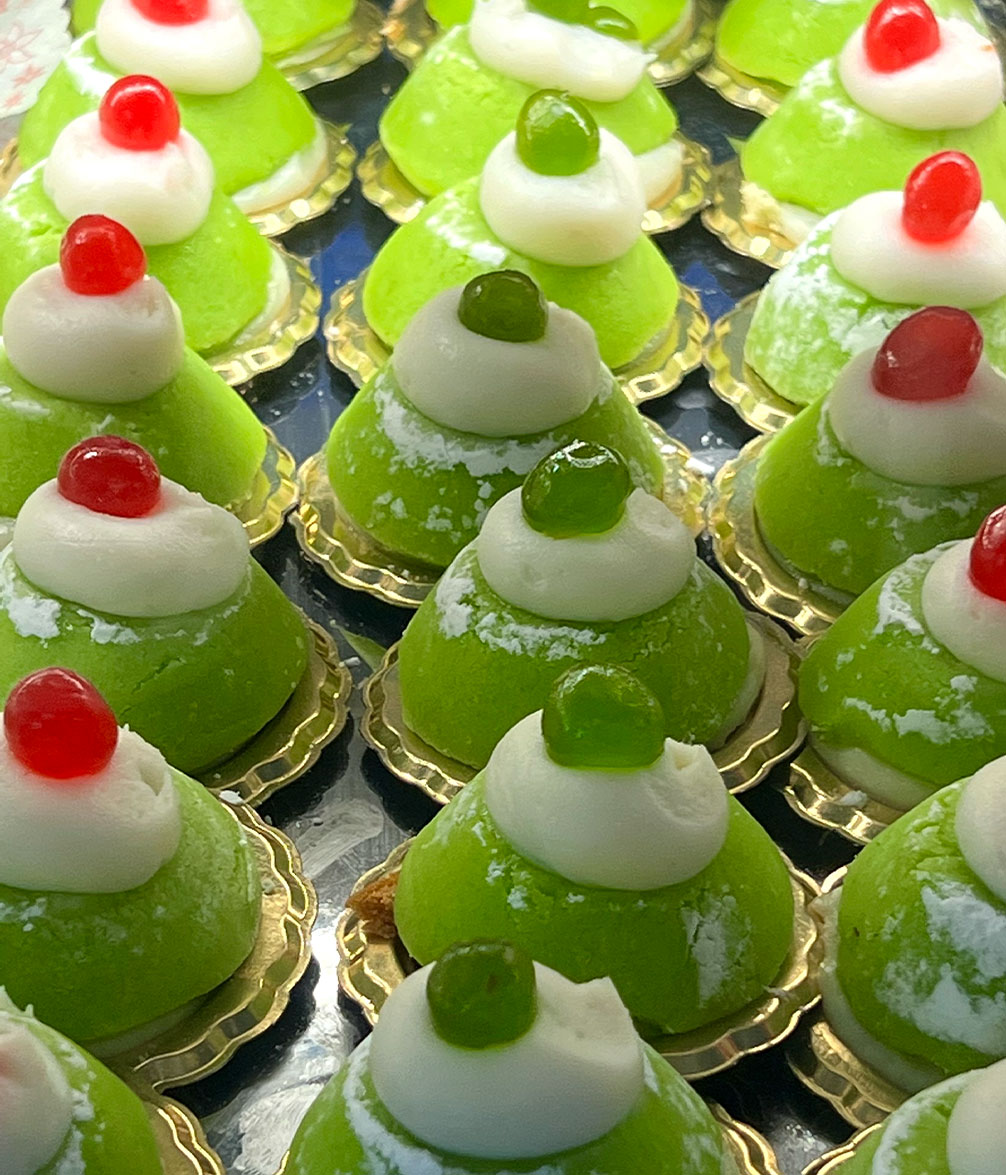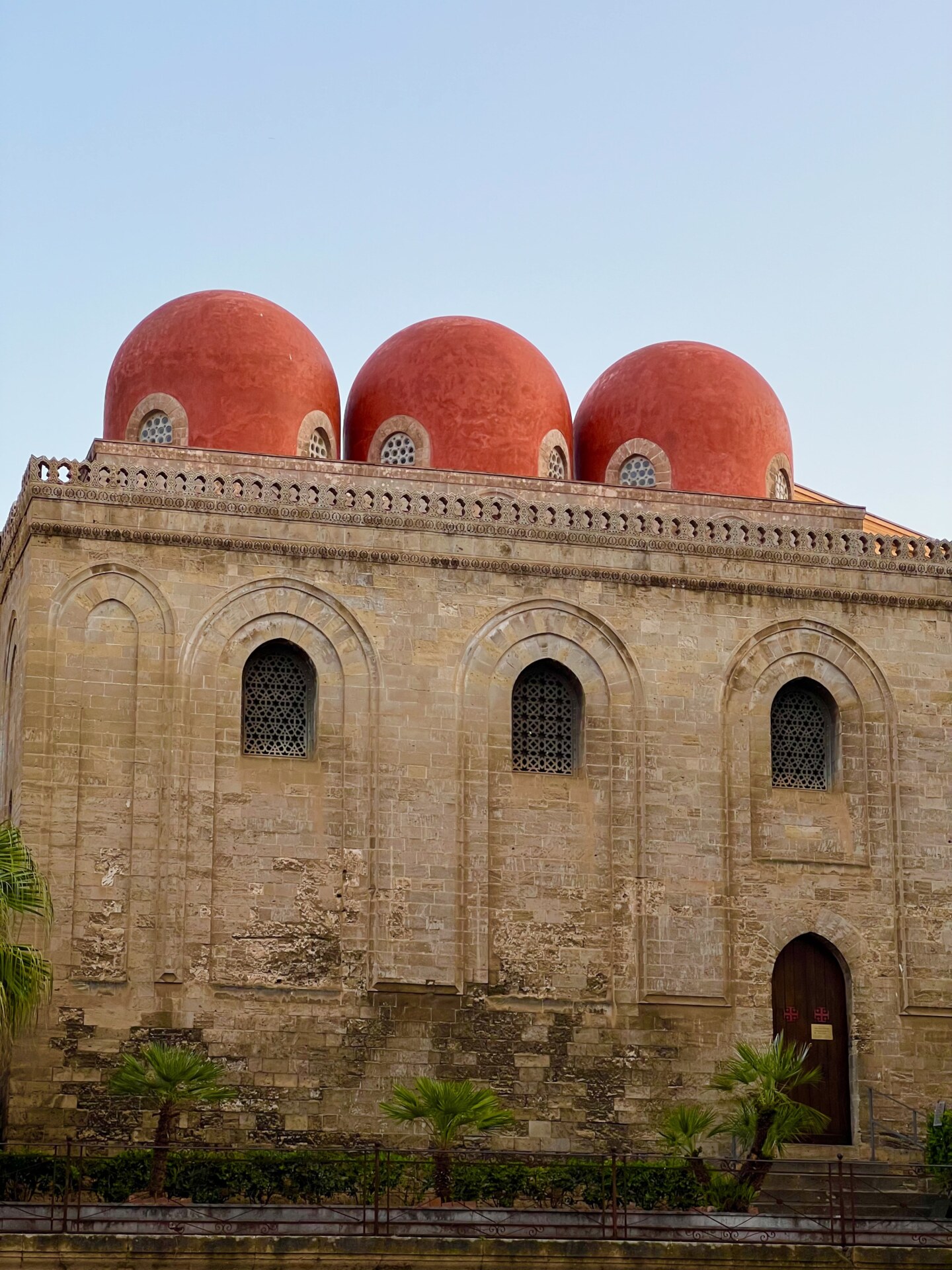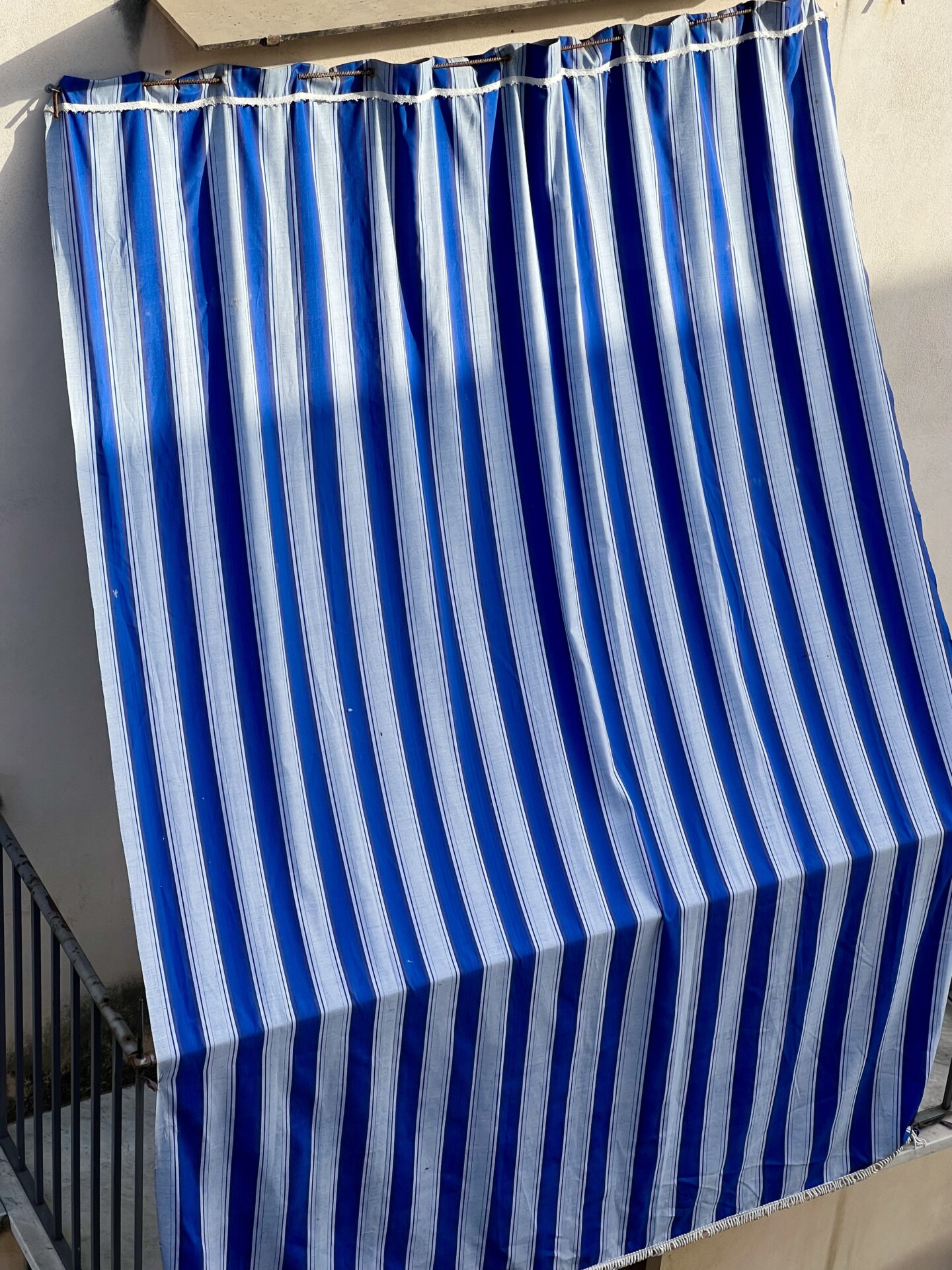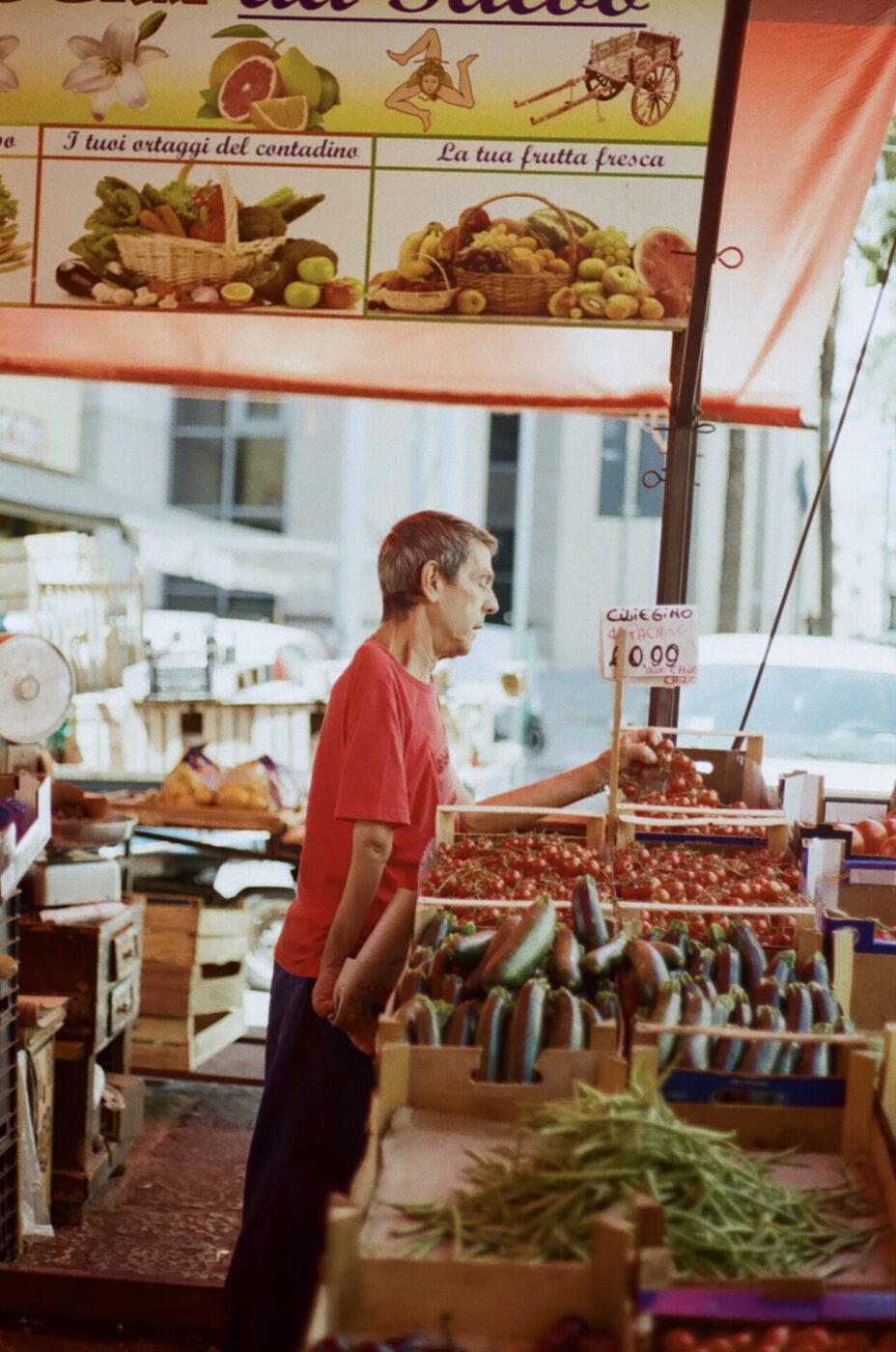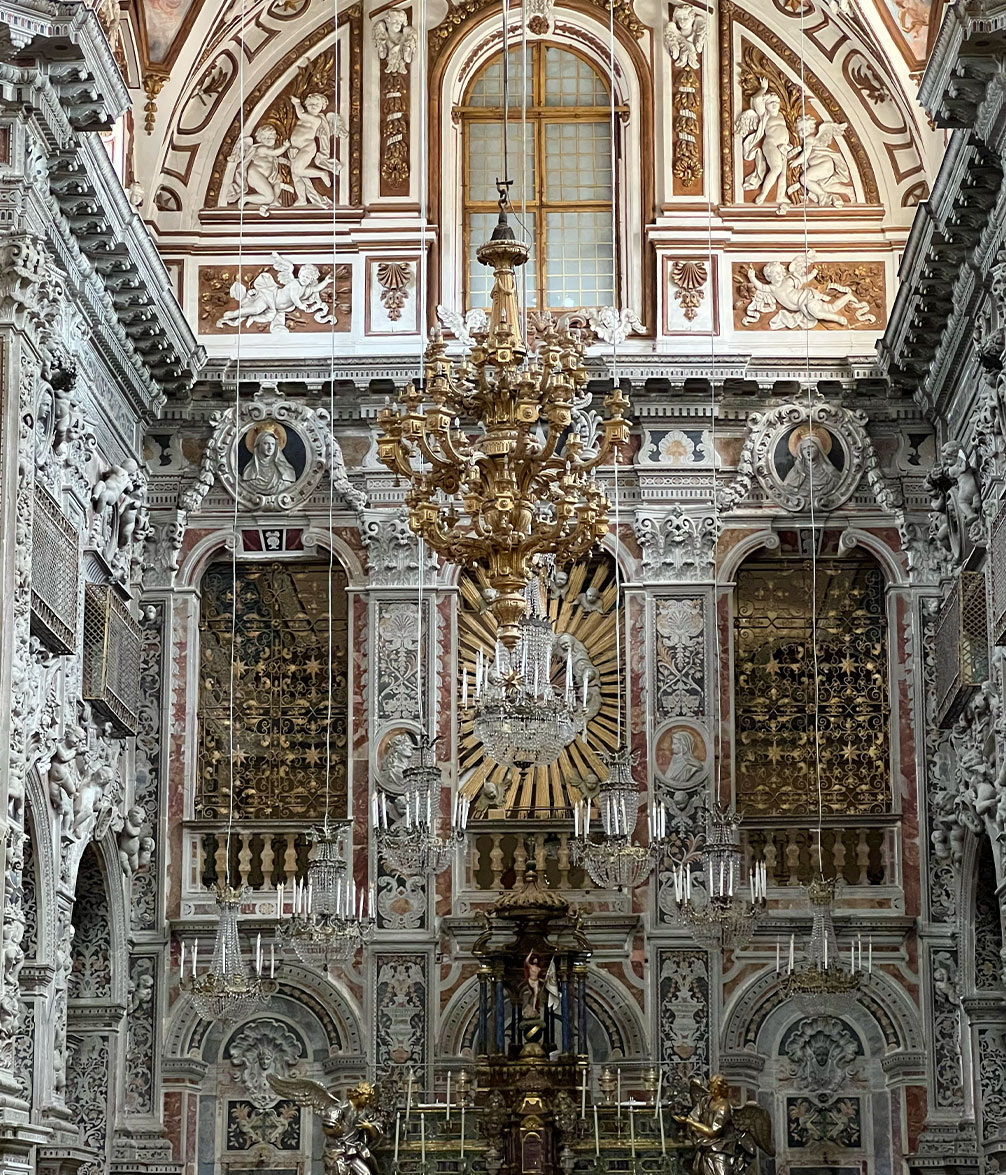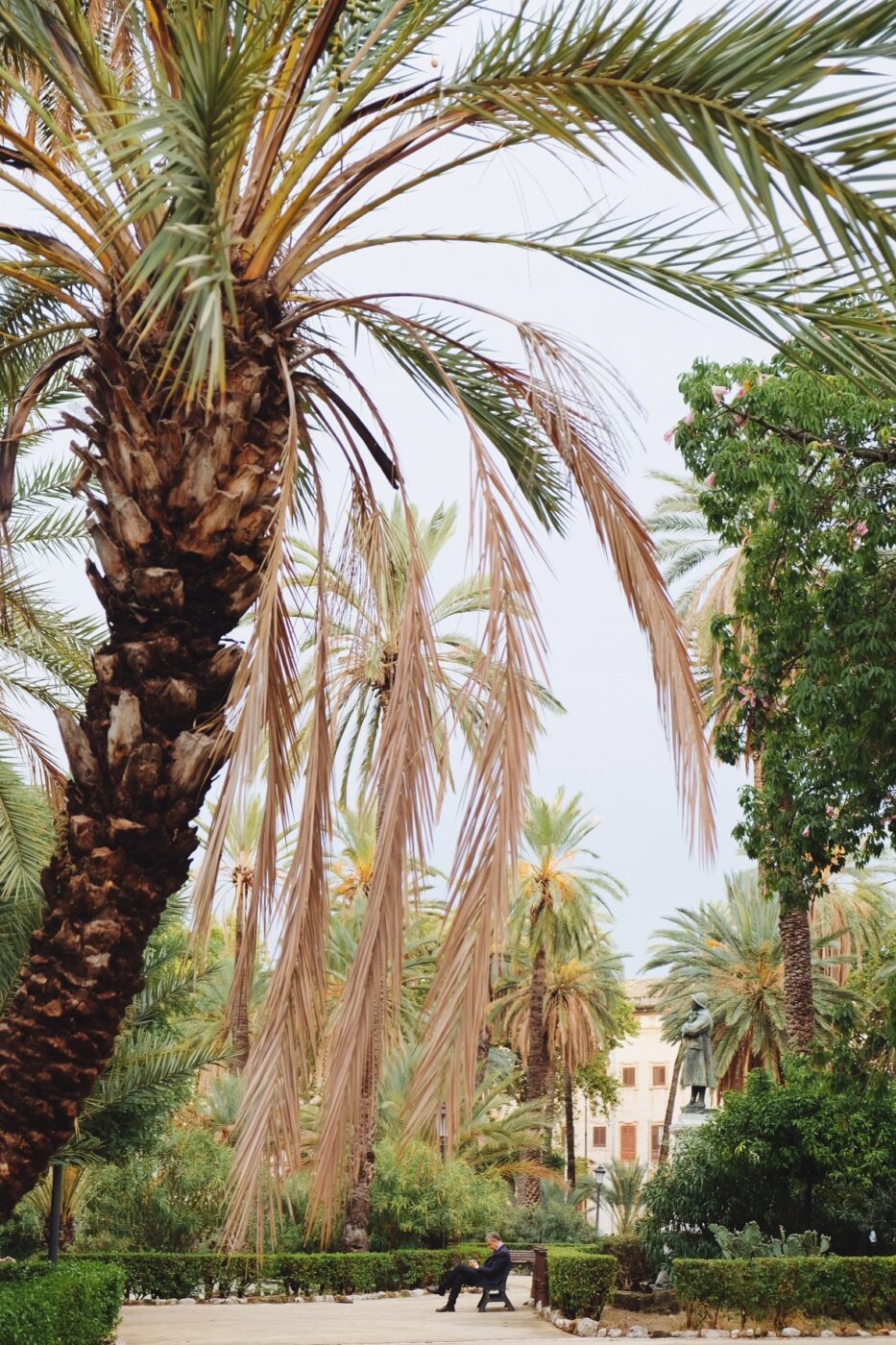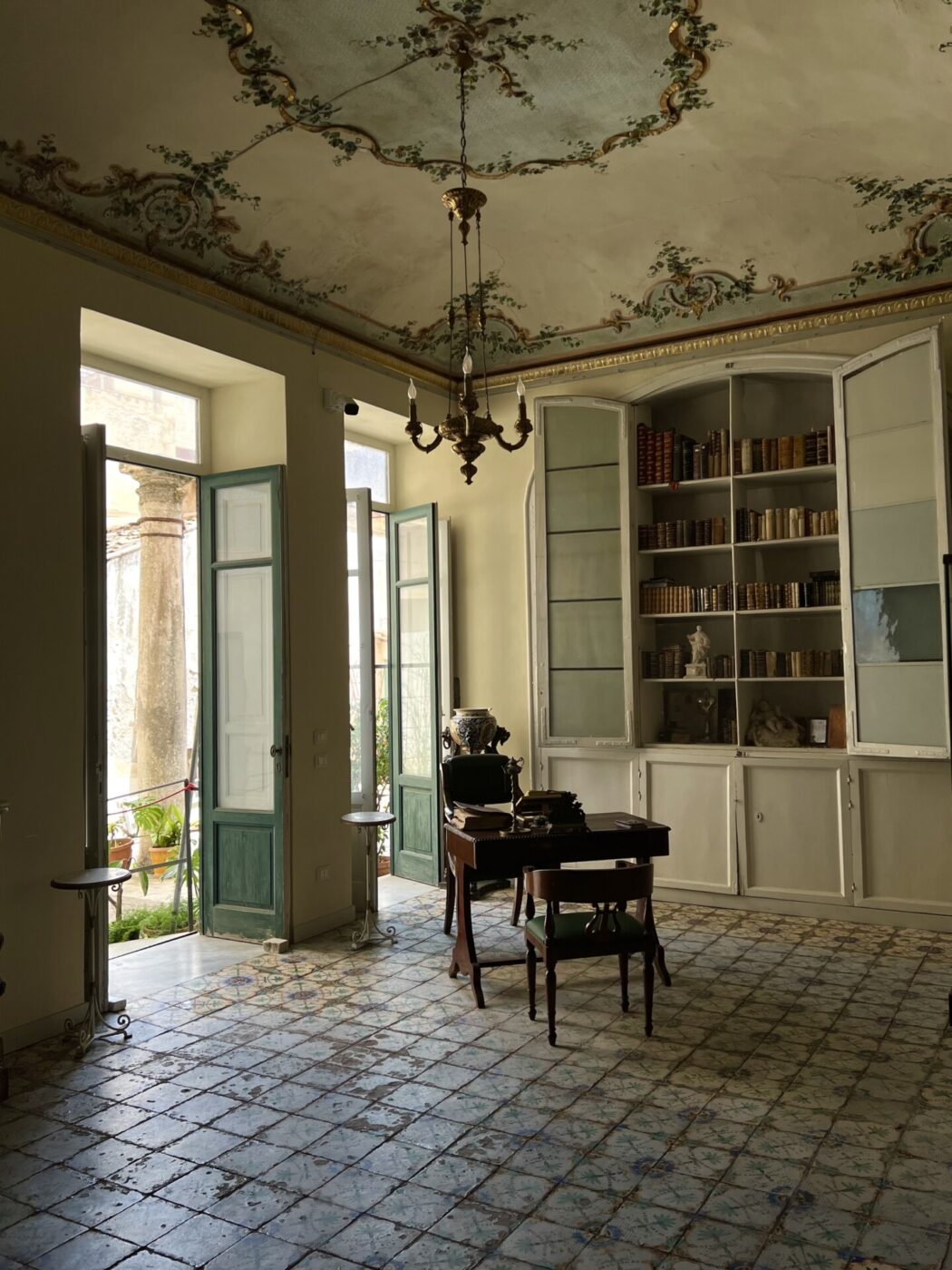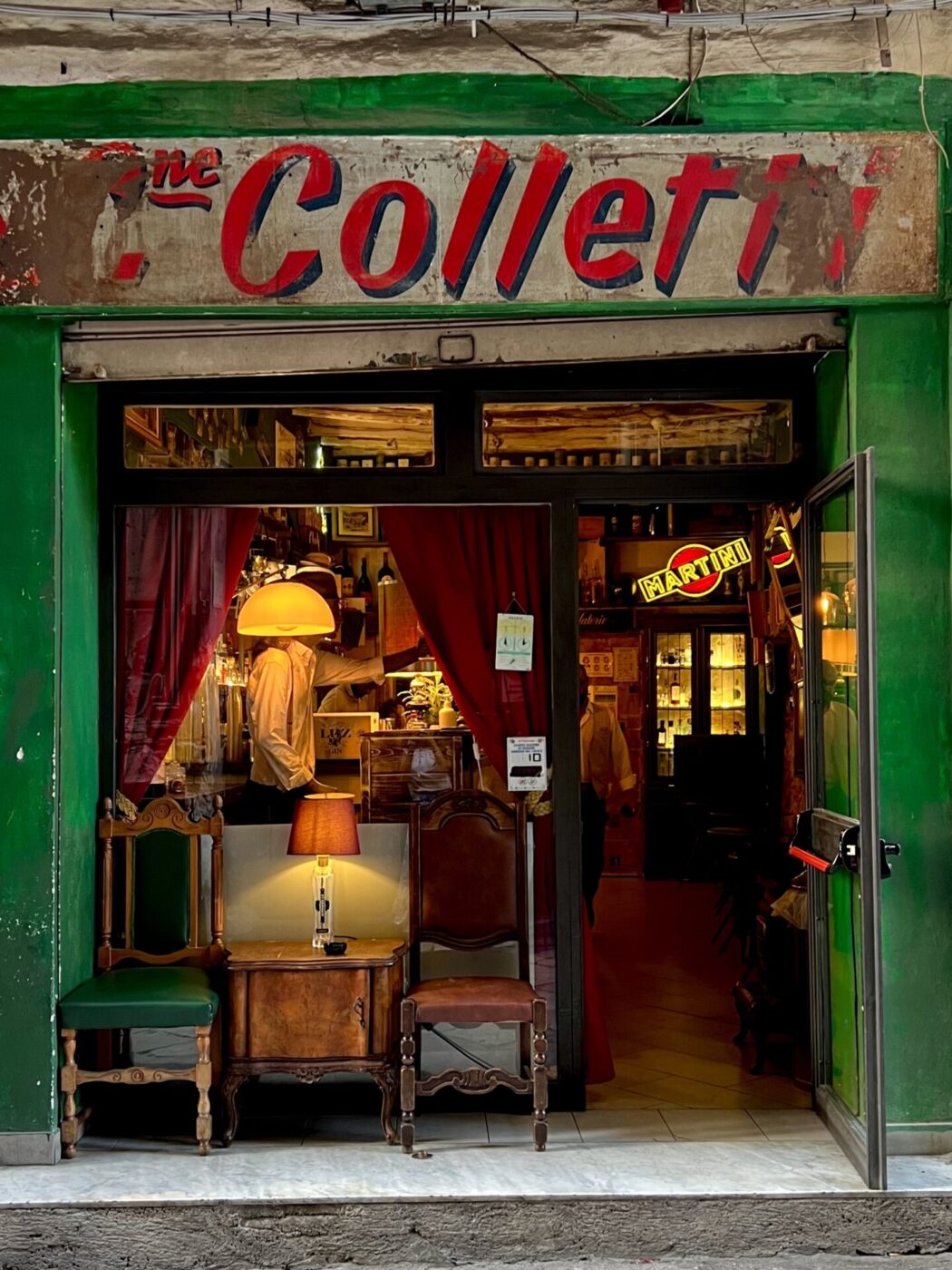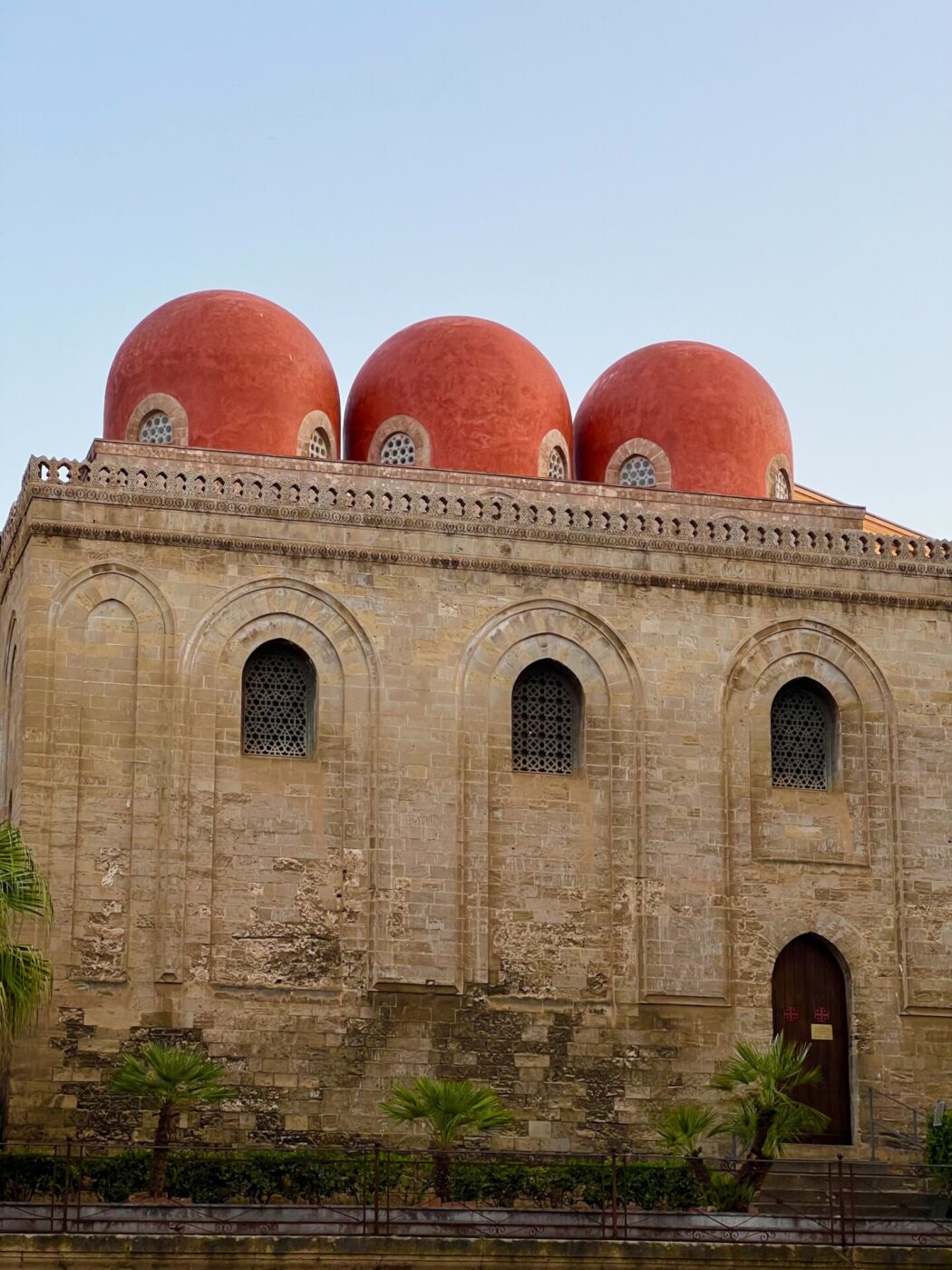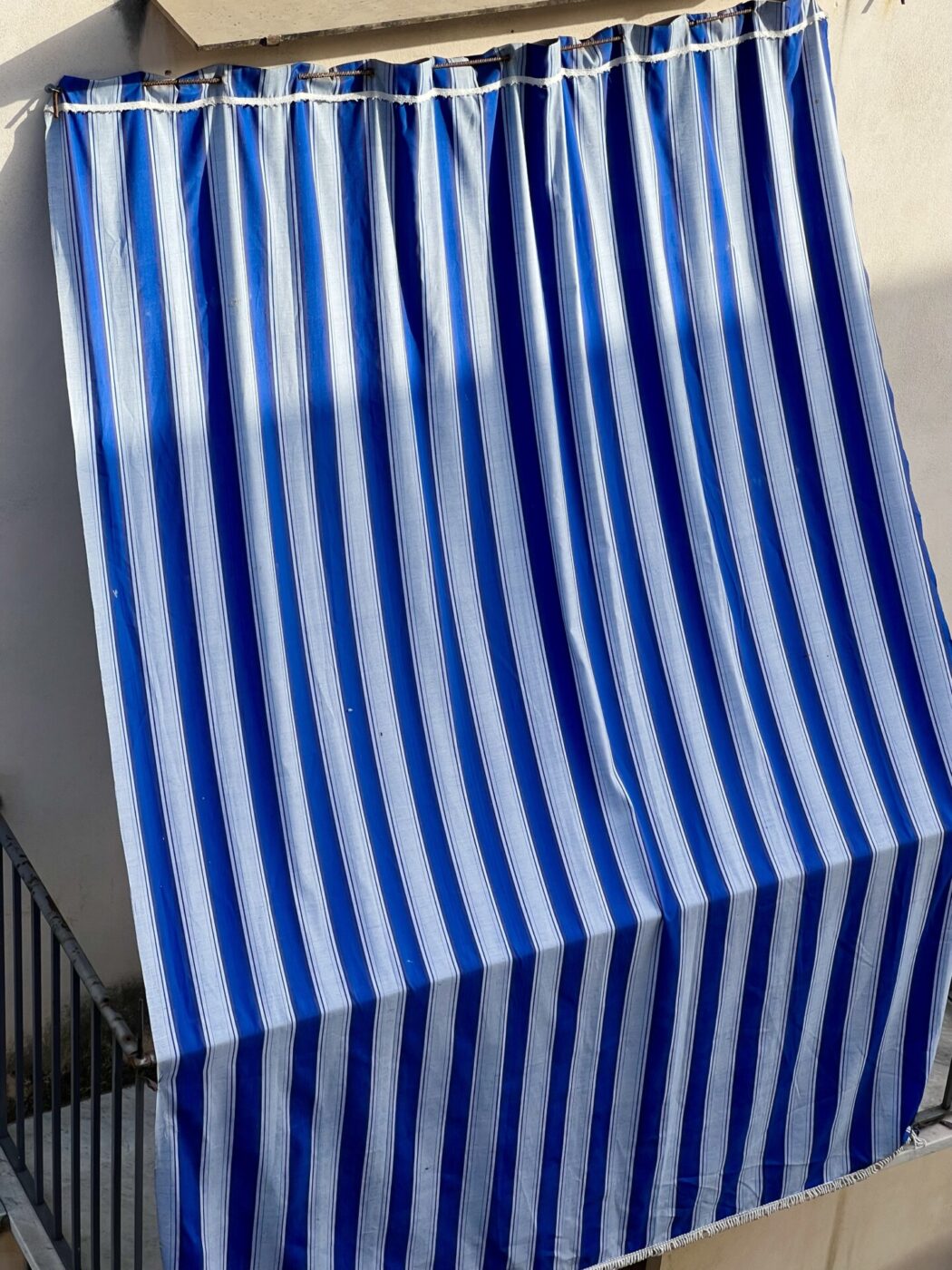The lively, boisterous city of Palermo may have roots dating back to the Phoenicians of the 8th century BC, but that doesn’t mean it hasn’t developed into the 21st. The Sicilian capital is a creative hub of the island, and there’s no shortage of inspiration: the vibrant metropolis’ architecture, food, and culture have been influenced by the Greeks, Carthaginians, Romans, Byzantines, Arabs, Normans, and Spanish over the centuries, which means it’s a one-stop-shop to get a taste of Sicily’s complex history and traditional flavors. Here, 29 places to do just that.
WHERE TO EAT IN PALERMO
Buatta – On one of Palermo’s oldest streets, this contemporary restaurant with a modern interior looks almost out of place; but step inside and you’ll immediately feel its old soul. Under Chef Fabio Cardilio, the menu has a similar vibe, with contemporary and upscale takes on traditional Sicilian dishes. All of the produce–and inspiration–comes from nearby producers. Must Order: Sfincione, anelletti alla siciliana, and bucatini con sarde e finocchietto selvaggio
Corona Trattoria – You’re immediately greeted with the warm smiles of Orazio and his father when you enter this family-run trattoria. Choose from a plethora of mouthwatering dishes all made with local seafood and produce–we love the raw gamberi rossi and all the seafood pastas–and let the sommelier choose the best pairing for you from their selection of hard-to-find natural and traditional Sicilian wines. You’ll need a reservation. Must Order: Calamaretti fritti, bucatini con le sarde, and pasta with squid ink and bottarga
Le Angeliche – In a secluded corner of the bustling Mercato di Capo, four young Sicilian women opened this bistro where the fish, meat, and vegetables come from the market and the dried goods from local producers. More than just fresh ingredients and menu inspiration, the market is an opportunity to live the tradition of the Arab Souk, where the market is the center of social and business affairs. Must Order: Tortello “ode al pomodoro”, bacio pantesco
Trattoria Da Pino – Trattoria da Pino is THE Palermitan restaurant for large portions of typical, home-cooked Sicilian dishes in a convivial atmosphere. This typical tavern is simply better experienced than written about, especially if you snag a seat at the shared table and make friends with whoever you might be sitting next to–from actors to businessmen to longstanding Palermitan families. Must Order: The swordfish rolls and glazed pasta
I Cuochini – Hidden behind the tiny door on Via Ruggero Settimo between the Teatro Massimo and the Teatro Politeama is one of the oldest gastronomia in the city, open since 1892. You’ll be in-and-out relatively quickly–this place is the precursor to Palermitano street food–as you’re here to order an assortment of mainly-fried, miniature bites from their long counter. Must Order: Panelle and i pezzi di rosticceria (“little pieces”): pasticcini con carne (bread filled with meat sauce), calzone, crocché di latte (fried milk)

I Segreti del Chiostro
THE BEST BAKERIES IN PALERMO
Bar Vabres – In the vibrant Botanical Gardens, the 50-year-old Bar Vabres is a secret gem of the Palermitane. Stop in for a perfect breakfast of coffee and a slice of cassata or for a quick lunch of perfectly crunchy arancine. Must Order: Arancina di carne and coffee from the specialty line, a partnership between Alessio Vabres and Etna Roaster.
I Segreti del Chiostro – Historically, Sicilian nuns were renowned for their pastries, all made with secret, orally-passed-down recipes and sold from behind closed doors; but they couldn’t compete with the pasticcerie opening across the island. This initiative, The Secrets of the Cloister, brings the nuns and their same age-old recipes back to the spotlight, reopening a bakery and museum inside a stunning monastery. They make the best cannoli we’ve ever had. Must Order: Sicilian cannolo
THE BEST GELATO IN PALERMO
Cappadonia Gelati – Here, owner and mastermind Antonio Cappadonia, who has been making gelato since 1987, puts extreme care into the selection of his raw materials–mainly local fruits and other ingredients. His inspiration comes from the land, creating flavors like “Fior di Fragole” with strawberries from the Sicani Mountains and “Crema Passito di Noto” with passito from Noto. Be sure to try whatever seasonal fruit flavors he has.

WHERE TO DRINK IN PALERMO
Bottega Colletti – You can recognize this spot by its beautiful red vintage signature. The drinks–with spicy vodka, citrusy rum, and chamomile grappa flavors–have as much character as the exuberant bartenders and the bar–covered with posters, backlit liquor cabinets, and candlesticks. It’s the best spot in the city center for a cocktail, and the dark, loungey vibe is perfect for a late night rendezvous.
Cicala – Inside this wine bar, the vibe is industrial-rustic-chic, with exposed stone, rustic lighting, and floating shelves of wine. Leave the choice of wine–there are over 600 labels, mostly natural–up to the charismatic owner, Filippo, and pair whatever he brings you with one of their great seafood appetizers. Must Order: Milk croquettes and polpette di sarde
WHAT TO DO IN PALERMO
Stanze del Genio – Nestled in the Kalsa district, the museum showcases a collection of over 5,000 Sicilian and Campanian brightly-painted majolica tiles from the 1500s to 1900. The diverse tiles once embellished the walls of bourgeois and aristocratic families, illustrating detailed familial history, rivalry, and trends from those eras.
Serpotta’s Oratories – In Palermo’s historic center, a myriad of single-nave oratories (small chapels) were erected during the late 16th and 17th centuries. In spite of bombings, only three of the Baroque buildings remain: the Most Holy Rosary in Santa Cita, San Domenico, and San Lorenzo, all decorated by the great stucco artist Giacomo Serpotta.
Camera delle Meraviglie – Discovered by accident, this ultra-blue “Chamber of Wonders” is believed to be a prayer or meditation room from the late 1800s, covered with silvery Arabic inscriptions. The engravings–which are read from right to left in Semitic language practice and from left to right in Latin, bear numerous religious references, including the symbolic number seven.
Cappuccini Catacombs – Among the dark, weaving tunnels–dug in the 500s–of the Capuchin monastery, you’ll find some 8,000 (!) corpses, categorized by gender and social hierarchy. The eerie spot has been visited for 200 years, but the bodies have been there for almost 2,000, a not-so-living testament to the island’s history.
Church of Santa Maria dello Spasimo – This roofless, deconsecrated church has walls reaching directly up to the blue sky beyond the city. Built in 1509 for defensive purposes, the church had several lives, from refuge to theater to lazzaretto (quarantine) during the 1600s plague to a storehouse of used furniture. The name “Spasimo” links to a work by Raphael, “The Spasm of Sicily”, commissioned by the monastery in 1517 that now hangs in the Prado in Madrid, much to Palermo’s chagrin.
Palazzina Cinese – Constructed in 1799, this stands as a superb representation of the chinoiserie aesthetic that influenced architecture, ceramics, textiles, painting, sculpture, and furniture in Palermo. The palace’s eclectic apartments span three floors with a pagoda roof, featuring Chinese motifs, painted cloth panels, and boxwood mazes.
Palazzo Butera & Valsecchi Collection – This museum, housed in a historic Baroque palace built by architect Giacomo Amato, features the enormous Valsecchi collection of archaeological pieces, exquisite porcelain, early 20th-century furniture, and unique pieces of contemporary art. The building was originally commissioned by the Branciforti family, renovated in 1759 after it burned down, and then joined to another palace owned by Moncada princes of Paternò.
Palazzo Alliata Villafranca – One of the oldest mansions in the city, the palace was inhabited by one of the city’s most important families for nearly three centuries and takes up an entire city block. The mansion now houses an art collection with Flemish works inside, including Van Dyck, two canvases by Matthias Stomer, and a series of family portraits displayed in the Salone dei Musici.
Palazzo dei Normanni – The well-maintained apartments in this dreamy royal palace are so well-kept you might expect to see a royal just hopping out of bed! Not to be overlooked is the palace’s Palatine Chapel, adorned with entire gold mosaic-covered walls–an undeniably painstaking effort–narrating tales of a city enriched by palm trees and exotic animals.
La Zisa – Erected in 1165, La Zisa–named after the Arabic “Al-Aziza” meaning “the splendid”–is in the Norman royal park Genoardo, referred to as the “paradise of the earth” in Arabic (Jannat al-arḍ). The palace blends Norman art and architecture with Arab decor.
Villino Florio – Designed by famous architect Ernesto Basile and commissioned by the prominent Florio family at the turn of the 20th century, this villa is as eclectic as Sicily’s cross-cultural history. The architecture is a combination of medieval elements, modern lines, refined floral carvings, baroque surfaces, Nordic trusses, and turrets that refer to French castles, Romanesque columns, and Renaissance ashlar.
Capo and Ballarò Markets – Amidst shouting vendors, the scent of frying food, and overwhelming piles of melons, artichokes, and other produce, you’ll find the real heart of Palermo at these two markets. You can buy anything–from fruits, vegetables, fresh meat and fish, bread, olives, and spices to fresh pressed juices, boiled octopus, fried fish, cookies, and panelle sandwiches–here, and you could spend hours wandering amongst the stalls.
Botanical Gardens – Stop into these stunning gardens for a reprieve on a hot summer day or a bit of color on a winter’s day. There are plenty of succulents, water lilies, ancient trees, greenhouses, and benches to welcome you and your book, and the Talea cafe is great for a refreshing mint and lemon water.

La Cappella Palatina, Palazzo dei Normanni
WHERE TO SHOP IN PALERMO
Fratelli Battaglia Salvatore e Giuseppe Snc – Sustainable before sustainable was trendy: this is one of the oldest dried fruit stores in the city, where everything is sold in bulk. Buy grains, legumes, and spices for your pantry and a small bag of roasted chickpeas for your walk.
Edizioni Precarie – Notebook and stationery lovers, drop by this store, opened by Carmela Dacchille in 2013, for one-of-a-kind designs that aim to recover artisan tradition and local stories: Letter Food Paper tells the story of the historic markets of Palermo by using the meat, fruit, and cheese wrapping papers as writing paper, helping to keep your thoughts, ideas, and drawings equally fresh.
Patrizia Italiano – This is the place to go if you’re interested in Sicilian ceramics. Internationally acclaimed Sicilian ceramist Patrizia Italiano draws inspiration from the landscapes, history, and diverse people of Sicily and the Aeolian island of Filicudi. The colorful clay works are an embodiment of Sicilian daily life, and one of the best souvenirs you can bring home.

Courtesy of Villa Igea
WHERE TO SLEEP IN PALERMO
Villa Igiea – Set directly on the sea, this luxury hotel is housed in a historic villa designed by the same architect as Villino Florio above. Each of the 78 rooms and 22 suites have a distinctly Sicilian feel, and between these and the ornate decor, terrace and poolside bars, and splendid dining room, you’ll feel as if you were an illustrious guest of the Florio family.
Casa Nostra Boutique Hotel – Built inside an 1,200-year-old palazzo, this boutique hotel is an oasis of peace amidst the tourist-trodden streets right near Teatro Massimo. The 12 rooms and suites are elegant and well-equipped, each named after a famous Sicilian sight. We’re particular fans of the outdoor jacuzzi, perfect for melting into after a full day of sightseeing.
Palazzo Natoli – Steps from the stunning Cathedral of Palermo is this equally stunning, 12-suite boutique hotel that celebrates the people, culture, and history of the city. The palace, built in 1765 by judge of the Grand Criminal Court Vincenzo Natoli, represents a moment of rebirth for Palermo, and it’s grandeur is captured in 19th-century Palermitan author Luigi Natoli’s novels, many of which are both set in and inspired by the hotel.


